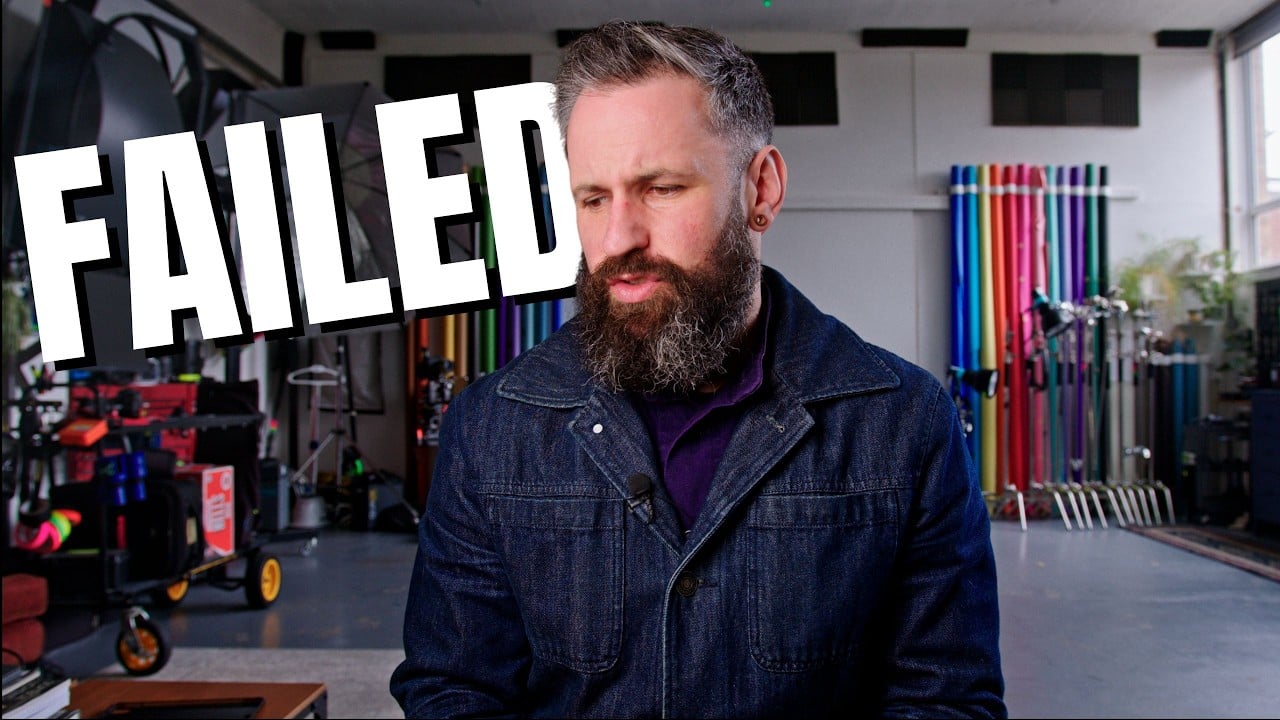
It’s that moment all photographers dread: Bookings dry up overnight, and the income you once relied on has vanished. You’re faced with mounting expenses, including perhaps a studio lease you can’t afford to lose. So, out of desperation, you do something you really don’t want to do. You get a 9-5 job.
But is it really all that bad? Most of us who have been full or part-time pro photographers for any length of time have been in this position. Objectively it’s not a big deal. However, the amount of internal pressure and shame that comes with this can be enormous, and it’s easy to fall into the trap of feeling like a failure and giving up. This is why videos like this one from Scott Chouciño offer valuable insights that will help you move forward if you’re in this position.
Scott tells us candidly about how, after a few years of earning great money as a full-time photographer, everything seemingly fell apart overnight, and he was forced to find a regular 9-5 job to tide him over. For six months, Scott worked a day job while squeezing in photoshoots during holidays and sick days.
Later, when finances were still tight, he even took a nighttime bar job, serving pints to clients who had previously paid him thousands for shoots. The shame was crushing. But looking back, he realizes something crucial: taking a day job didn’t make him any less of a photographer.
The Stigma Around 9-5 Jobs in Photography
There’s an unspoken hierarchy in photography—a belief that “real” photographers don’t need side gigs. But Scott argues that this mindset is toxic.
- Photography ≠ Business Success – Being a great photographer doesn’t automatically mean you’re a great business owner. Financial struggles don’t reflect your skill behind the camera.
- The Industry Is Unpredictable – Even top photographers face dry spells. Scott recalls how COVID barely affected him because he’d diversified his income, but before that, he lived “shoot to shoot,” leaving him vulnerable when work stalled.
- Multiple Income Streams Are Normal – Scott now runs three businesses (including photography), works as an agent, and earns from YouTube. Yet, he still considers himself a photographer first.
Advice for Photographers in a Slump
1. Separate Your Identity from Your Income
Just because you’re not making money from photography right now doesn’t mean you’re not a photographer. Scott still gets most excited about test shoots—not paid gigs. Indeed, having a part-time regular, guaranteed income frees me up to choose the photography jobs and projects I really want to do, not the soul-crushingly boring ones I have to do just for the money.
2. Diversify Your Income
This cannot be overstated enough, and I believe it rings true for anyone working in the creative field, particularly if you are self-employed or run a small business.
- Passive Revenue – Sell presets, offer online courses, or monetize a YouTube channel.
- Side Businesses – Scott’s other business still ties back to photography. Similarly, writing for a photography blog (see what I did there?) or teaching or running workshops are all photography field-related and will actually help open up contacts and often lead to more photography work.
- Freelance Gigs – Commercial work, stock photography, or even assisting other photographers can keep cash flowing.
3. Protect Your Creative Time
Even with multiple jobs, Scott guards his photography time fiercely. If you take a 9-5, schedule shoots on weekends or use PTO for gigs. It’s also important to protect your overall energy, you’ll essentially be working a couple of jobs simultaneously so pace yourself and don’t try to take on more than you can comfortably manage. It’s fine for short bursts of time, but try to have a longer-term plan for when things stabilise as well.
4. Learn from the Feast-and-Famine Cycle
Scott likens commercial photography payouts to “drug dealer money” in that you’ll earn a massive chunk of income in one go, and then perhaps not have anything for a few months. Scott now stashes away large payments and relies on smaller, consistent income streams for stability. It’s incredibly important to view these large cash injections as a sort of lottery win, blowing it all on new gear or luxury items. It’s far better to be boring and grown up about money and make sure you have enough in reserve for dry spells and for taxes.
It’s Okay to Get a Job
Scott’s message is simple: If you need a 9-5 to survive, take it. The only “failure” is letting pride stop you from doing what’s necessary. Some of the most successful photographers have side hustles, investments, or even full-time jobs because the industry is volatile.
Equally, there is nothing wrong with keeping photography as a hobby. Some of the best landscape photographers I know have not monetised their work, and they go out every week to make exceptional images and have a blast doing so.
At the end of the day, being a photographer isn’t about how you make money. It’s about loving the craft. And if a day job lets you keep shooting? That’s a win.


